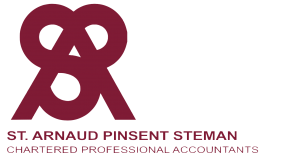How to Read Financial Statements
When people hire an accountant, they are usually looking for two things: financial statements and tax returns. This post serves as an introduction on how to read your financial statements.
In this example, we will follow Sample Corp. through their first two years of business. Click the red button below for a sample set of statements to follow along with.
Statement of Income
See the above sample financial statement, page 4 for a visual example. This can sometimes be called a Statement of Operations, Statement of Revenue over Expenses among other names.
The top portion of this statement details revenues, cost of goods sold, and expenses earned and incurred during the year. Depending on the business, there may be more or less detail as required. Expenses are broken down into categories so track where funds are going each year.
The bottom portion shows "other items" such as exceptional events, interest income, capital gains, foreign exchange, among other. It also shows how much is paid in taxes in the year.
Statement of Retained Earnings
See the above sample financial statement, page 3 for a visual example. This can sometimes be called a Statement of Deficit, Statement of Changes in Net Assets, among others.
The prior year's net income ($67,400) in the example gets added to retained earnings after the year ends. The statement of retained earnings can be thought of as the history of the company's profitability. Retained earnings is also reduced by dividends paid out.
Balance Sheet
See the above sample financial statement, page 2 for a visual example. This is also sometimes called a Statement of Financial Position. Unlike the above two financial statements, this statement does not cover a fiscal year, but is rather a snapshot at a point in time (in the example financial statements above, June 30, 2020).
The first portion shows the company's assets, separated into current and long term assets. Common current assets include cash, accounts payable, prepaid expenses and short term investments. Long term investments can include property, equipment, long term investments, and goodwill.
Below assets are the company's liabilities, once again separated into current and long term. Common current liabilities include accounts payable, GST payable, credit cards, taxes payable, and current portion of long term liabilities. Long term liabilities can include long term debt, loans, or other debt not paid in the next year.
Shareholders' Equity includes the stated value of issued and outstanding shares, and retained earnings from above. Total assets will always equal the sum of total liabilities and equity.
Note(s) to the Financial Statements
There may also be notes following the statement of income. These can include amortization schedules, details of long term debt, or just explanations of certain accounts. In the above example the breakdown of capital assets is broken down into categories.
There may be more statements covered above such as a Statement of Cash Flows. If you have questions about your financial statements, please speak with one of our team members!





